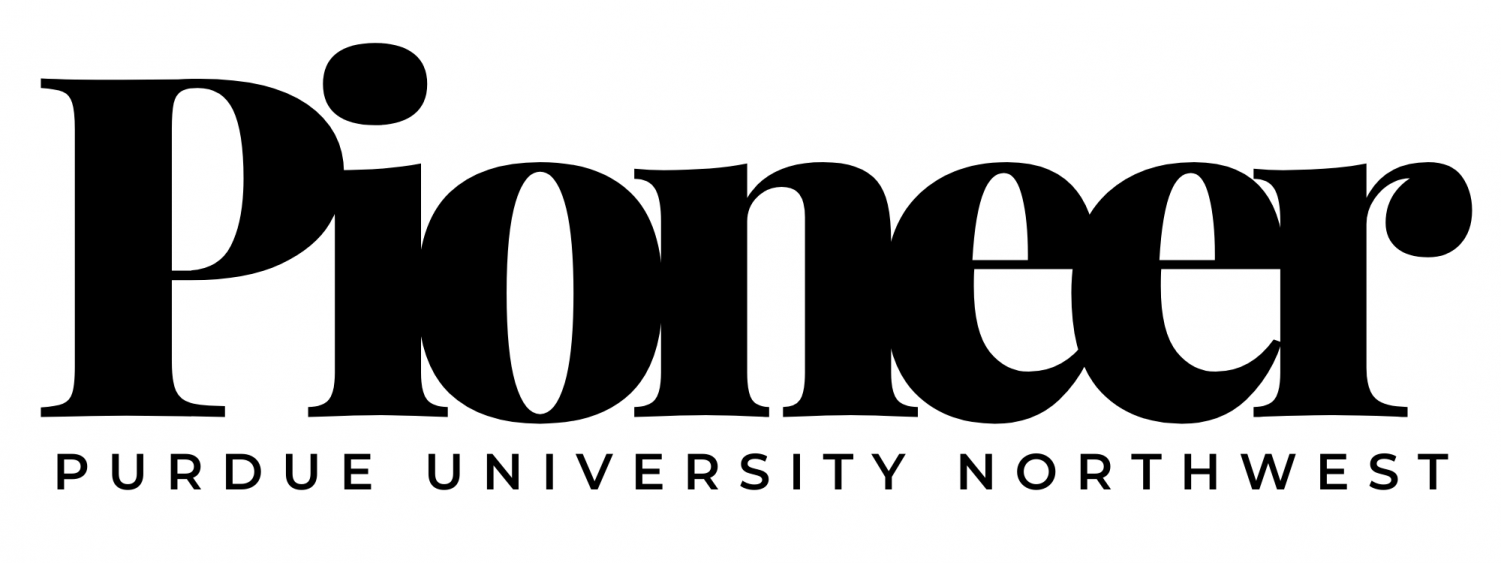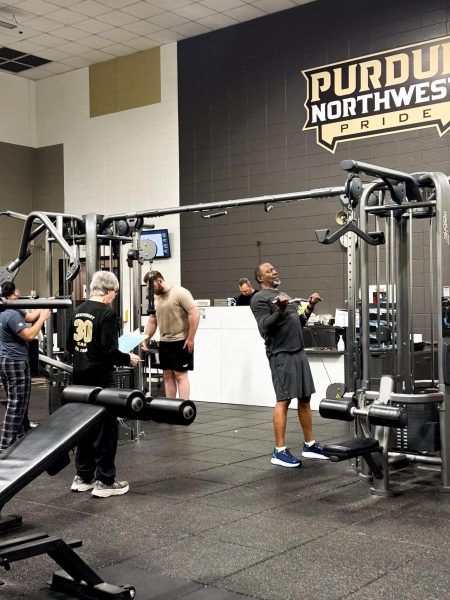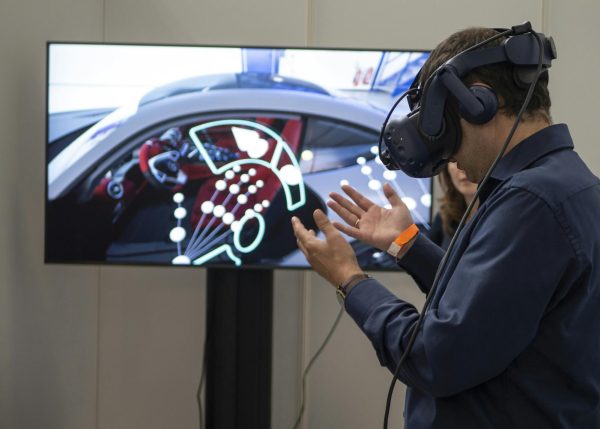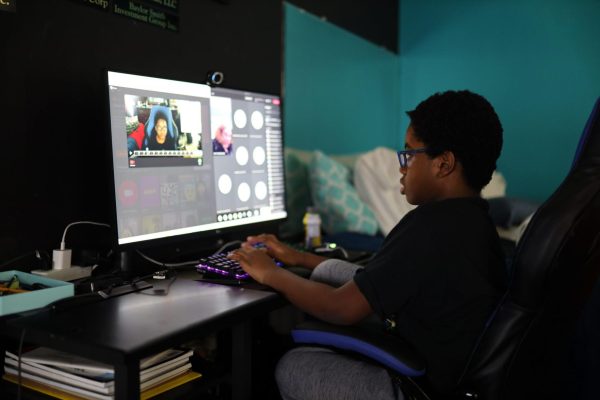Online courses challenge students and faculty – but they may offer more effective learning environment if you can adapt
It is 9:25 a.m. on a Monday and Aaliyah Colon has slept through her alarm. She has a class in five minutes. She snaps out of bed, throws on a stale hoodie, brushes her hair and logs onto her class, just in time.
“No one is going to see that the back of my head is all matted with tangles. I can get away with that now,” she said.
Colon is a junior studying Human Resources. Her experience that morning demonstrates one of the few silver linings at Zoom University, a nickname students are using now that most classes have moved online because of the coronavirus pandemic.
Across the country, college students are struggling to adapt to online classes. A recent study by the research group educationdata.org found that 63% of college students nationwide feel online instruction is inferior to in-person instruction.
But the facts may be more complicated. Student performance in online classes likely has more to do with the students themselves than the technology used to educate them. A 2019 study by George Mason University found that the biggest concern with online learning lies in the students’ time management, learning ability and self-discipline.
“Their work is suffering because students have different expectations of an online class. In reality, online classes are harder than in-person classes,” said political science professor Yu Ouyang. “When you are in class once or twice a week it is sort of an accountability tool. When you are online, a lot is on your own. You have to be very on top of your work or you will fall behind.”
Ouyang teaches two introduction courses and has noticed that freshmen are finding the transition especially difficult.
“Not only are they adjusting to online work and being on their own most of their time, they are picking up the pace of a college class,” he said. “The feedback I’ve gotten from students… [says that] most of their classes are way too hard. And that [they think] there is no way that an online class should have this much extra work. Students seem to think that online classes are blow-off courses. That is not the case, especially not in college.”
The coronavirus-precipitated online transition has impacted 3,278 American higher education institutions and 22.3 million students. A June survey by educationdata.org found that 93% of American college students have switched to online classes.
At PNW, nearly 85% of the courses offered have been transitioned to some variation of online learning; 23% of classes are entirely online, 33% use live lectures, 28% are hybrid and 16% are face-to-face according to Kris Falzone, associate vice chancellor for marketing and communications.
The change has taken a toll on many PNW students, who acknowledge they struggle with distraction.
“While I am watching lecture [online], I do other homework,” said junior Nursing student Tommy Zhang. “It is a lot harder to pay attention.”
Zhang’s friend Lee Covarrubias agreed.
“Your attention span is not as good [in online lecture],” he said. “Some of our lectures are three hours. Your eyes wander at home.”
Sophomores Phil King, a computer science major, and Hannah Steepleton, a Human Development and Family Studies student, have all of their classes online. Remote learning is stretching their attention spans thin.
“On a scale of one to 10, my attention span is about a four. Hannah is a two,” said King, as he set up for another game of pool in the SULB game room. Even though King and Steepleton’s classes are completely online, they still come to the Hammond campus for the little student life that remains.
“It is hard when you are just staring at a computer screen by yourself. The classroom setting motivated me,” said Steepleton.
The courses that most challenge student discipline and accountability are asynchronous in which students control when they view pre-recorded lectures and access class materials. A George Mason study found taking an asynchronous class without an engaged instructor requires high levels of self-motivation, self-regulation and organization.
However, the asynchronous format is popular with PNW students who juggle their education with employment or attend remotely, particularly from overseas, many time zones away. About 23% of the courses offered at PNW are asynchronous.
“I have one student who is actually in Mongolia. Choosing an asynchronous class is more flexible to him, otherwise, he would be logging into class in the middle of the night,” said Ouyang. “Most of our students probably work too much as it is. Many of our students actually ended up working longer hours in the middle of COVID. Some already had difficulty juggling school with their work.”
Most PNW students have jobs and some faculty estimates suggest the majority may work full time jobs while attending classes. Some professors chose the asynchronous class style to accommodate these students.
Another 33% of courses are synchronous and have scheduled virtual class times that require student attendance, removing some of the accountability and motivation related burdens that asynchronous students carry.
Synchronous classes use attendance, participation and cameras to hold students accountable. However, many of these classes do not require that students keep their cameras on. Eyes wander, students lose focus and distraction sets in.
“I have like 60 people in some of my [online] classes. Ninety percent of them keep their cameras off,” said Zhang. “It is hard on the teachers because nobody has their mics on, people are just not really paying attention. My professors try so hard to create a discussion and no one wants to participate.”
Covarrubias agreed.
“Better to keep your cameras on. People and other students keep you accountable and focused on the lecture. I think it would be a benefit for teachers to require you to [use] your cameras,” he said.
One advantage of online education may be that they enable shy students to engage more than they
might in class. PNW professors are seeing their more bashful students’ blossom in an environment free from immediate comment and criticism.
“I had one student in my in-person class last semester who was terribly shy. I have him in another class that is completely online and asynchronous,” said Catherine Gillotti, associate professor of Communication Studies. “When I read his work online, I was like, who is this person? I know this person, he had so much to say [online]. He said he felt more comfortable online than he did in person.”
But, as COVID-19 cases continue to spike, PNW will continue to offer most classes online next semester.
“We plan to continue offering courses in the four modes of face-to-face, hybrid, virtual classroom and 100% online for the spring semester,” said Kris Falzone, associate vice chancellor for marketing and communications. “If the safety trend continues, we would anticipate a slight change in the distribution of courses with more movement to in-person and virtual classroom modes.”






